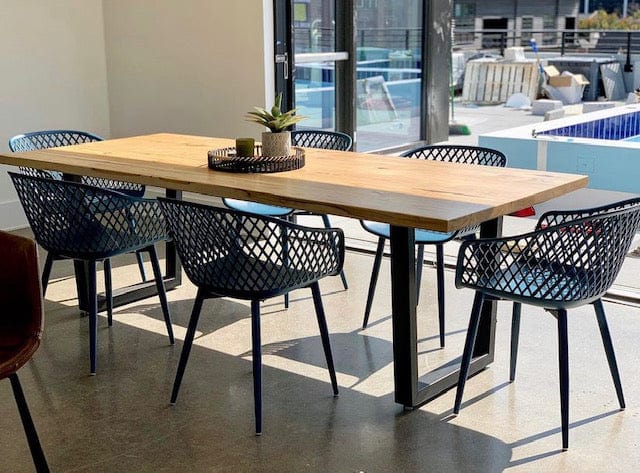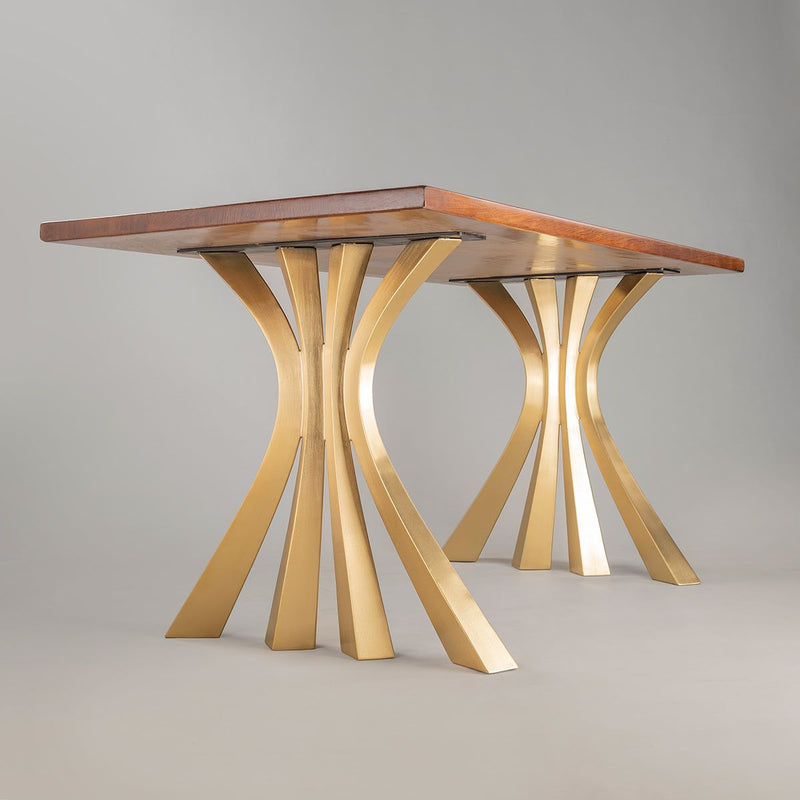Update Your Furniture with Trendy Dining Room Table Legs
Update Your Furniture with Trendy Dining Room Table Legs
Blog Article
Selecting the Perfect Table: What Styles Job Best for Your Home?
Selecting the ideal table for your home can be a nuanced process that balances looks and functionality. Whether your area leans towards traditional beauty, modern minimalism, rustic appeal, or industrial stylish, the variety of styles available can accommodate varied preferences. Each design provides distinct advantages and obstacles that can either boost or disrupt your eating location's consistency. Recognizing how different materials, forms, and sizes interact with your existing style is essential. To browse these selections effectively and locate a table that absolutely complements your home, consider the following aspects thoroughly.
Assessing Your Area
Assessing the measurements and layout of your eating location is a critical very first step in picking the best dining table. Begin by measuring the size and width of the space, making up entrances, windows, and other building functions that might affect table placement. This makes sure that your table not only fits however likewise enables comfortable movement around it.
Think about the number of individuals you normally entertain. A table needs to fit your household's daily requirements while providing sufficient flexibility for occasional guests. As a guideline of thumb, assign a minimum of 24 inches of table size each to ensure a comfy eating experience.
It's likewise important to keep ideal clearance around the table. Preferably, there need to go to the very least 36 inches between the table side and wall surfaces or various other furniture, enabling simple access and activity. For rooms where chairs with arms or extra storage space systems like buffets are involved, raising this clearance to 48 inches is advisable.
Illumination and ambience play considerable functions. Ensure that your table lines up with existing lights fixtures or prepare for ample lights services. This detailed spatial assessment assurances that your table not only fits literally but also harmonizes with your space's overall functionality and visual.
Popular Table Styles

Conventional eating tables commonly feature ornate details, curved legs, and abundant timber surfaces, evoking a feeling of classic sophistication. They are excellent for homes with traditional design or those wanting to include a touch of sophistication to their dining area.
Modern eating tables focus on simplicity and clean lines, often integrating products like glass and steel. These tables are suitable for contemporary spaces, providing a smooth and minimalist look that enhances minimal design approaches.
Rustic dining tables, on the other hand, stress all-natural materials and a handcrafted look - dining room table legs. They usually include recovered timber and a distressed finish, developing a warm and welcoming ambience. These tables work well in farmhouse-style homes or those looking for a relaxing, natural feeling
Industrial eating tables incorporate raw materials such as steel and timber, commonly showcasing a practical visual. This style is well-suited for loft spaces or city rooms, including a touch of sturdy charm and toughness to the eating experience.
Each style offers Our site unique advantages, making it essential to pick one that aligns with your home's total layout and your personal preferences.
Material Selections
When picking a table, the choice of product plays a critical role in identifying both the table's aesthetic appeals and functionality. Timber, metal, glass, and composite materials each deal unique benefits and obstacles, making it critical to straighten the material with your home's style and way of life demands.
Wood is a classic and functional alternative, readily available in varieties such as oak, walnut, and mahogany. Known for its longevity and warmth, timber complements both standard and contemporary interiors. It requires routine maintenance to prevent scrapes and warping.
Metal informative post tables, frequently crafted from stainless steel, light weight aluminum, or functioned iron, are applauded for their modern-day appeal and robustness. They are specifically suited for industrial or minimalist settings yet can be susceptible to damages and might feel cold to the touch.
Glass table bring an air of elegance and visibility, perfect for smaller rooms as they produce an illusion of even more room. While easy to tidy, glass can be vulnerable to smudges and needs cautious taking care of to stay clear of chips and fractures.
Composite materials, such as MDF and plywood, offer cost-efficient and personalized solutions, though they might lack the long life of natural products. Choosing the ideal material guarantees your table is both a functional property and an aesthetic delight.
Shape and Size Factors To Consider
After determining the suitable product for your dining table, the following consideration is picking the right sizes and shape to fit your room. The shape of the table substantially affects the room's visual and capability. Rectangle-shaped tables, the most common form, are ideal for bigger rooms and can suit a greater variety of visitors. They additionally enable an extra official eating experience. On the other hand, round tables foster a sense of affection and are superb for smaller dining areas, urging conversation by removing corners and making every person really feel equally included.
As a policy of thumb, allocate at the very least 24 inches of table size per person to ensure comfy dining. Furthermore, think about the table's clearance area: there should be at the very least 36 inches between the table side and the wall surfaces or other furniture. Extending tables supply adaptability if you frequently hold bigger events, supplying additional seating when required without occupying additional room daily.
Matching Your Design
Choosing an eating table that balances with your existing decoration is critical in creating a natural and welcoming room. A streamlined, minimal table with clean lines is optimal for a modern home, while a vintage, luxuriant table fits an extra standard setup.
Color and material are equally significant. If your decoration features cozy tones and natural materials, consider a wooden table to boost the natural important site feel. Conversely, a glass or metal table may be better in a space controlled by cool colors and commercial aspects. Focus on the surface, as it should mirror various other furniture and components to preserve harmony.
A rough-hewn, redeemed timber table can add personality to a rustic area, while a refined marble surface can elevate an elegant eating location. A well-matched dining table not just boosts visual allure however additionally improves the overall eating experience.

Conclusion
Picking the excellent eating table demands mindful consideration of space, style, materials, shape, and dimension (dining room table legs). Conventional tables enhance classic insides with rich wood coatings, while modern-day tables fit modern setups through glass and metal. Rustic layouts introduce heat using all-natural materials, and industrial designs boost city atmospheres with raw elements. Balancing the table with existing decoration guarantees both functionality and visual allure, adding to a cohesive and cosmetically pleasing dining area.
Report this page